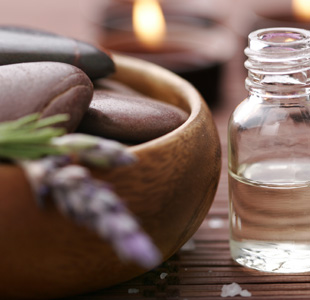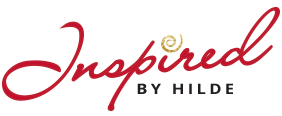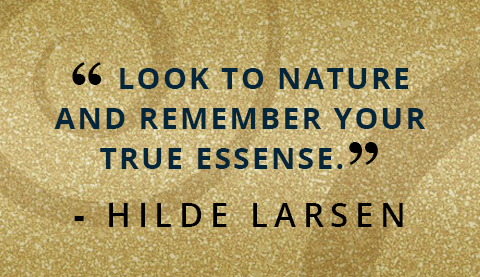Empowered By Hilde
I fell in love with essential oils many years ago. I was introduced to some of the oils by a friend, and just from smelling them I was uplifted. Studying and experimenting with all these wonders of nature has left me in awe and excitement of their properties and powers.
I use the oils every day, alternating intuitively between my magical bottles in my essential oil chest. I have built a great collection, consisting of a large variety of oils, mostly the singles, but also some blends. My alltime favorite to start with oils are Frankincense, Lavender, Lemon, Myrrh and Cedarwood. The list could easily get very long, as there are so many, with so many amazing properties.
After my hip surgery, I made a blend of Frankincense, Clove, and Lavender essential oils in a coconut carrier oil, and WOW, the scar was almost gone within 3 weeks! I mean, the doctor could not believe what he was seeing.
I will blog about my oil experiences under Power Up By Hilde. I will post any exciting news that I come across, so make sure you sign up for my newsletter and follow my Power up Blog!
Feel free to download my FREE book on essential oils HERE
I always incorporate some oils into my clients protocol, as it works amazingly well with a clean diet, herbs, and joyful living.
“In the Bible, essential oils are referenced 264 times and 33 different types of oils are mentioned.”
If you have ever enjoyed the scent of a rose, you’ve experienced the aromatic qualities of essential oils. These naturally occurring, volatile aromatic compounds are found in the seeds, bark, stems, roots, flowers, and other parts of plants. They can be both beautifully and powerfully fragrant. In addition to giving plants their distinctive smells, essential oils protect plants and play a role in plant pollination. In addition to their intrinsic benefits to plants and being beautifully fragrant to people, essential oils have long been used for food preparation, beauty treatment, and health care practices.
CAPTURING ANCIENT WISDOM:
Cleopatra, who was famous for her beauty and charm, owned the first spa near the dead sea where she used essential oils for her personal beauty treatments. Also, essential oils were used by Moses and were referenced in the Bible. In fact, in the book of Exodus when the Lord refers to holy anointing oil it was a specific formula God recommended.
 This formula was used to anoint priests and kings. And, this holy anointing oil was used when someone went to the priest for support. The oil was poured onto their head and they were prayed for. And this wasn’t just a ritual, this oil was known to have beneficial properties. In the book of Number 16 Moses tells the high priest Aaron to burn oils as incense to stop a plague. We know that these oils, especially cinnamon, have powerful anti-bacterial properties that could protect the people. Other beneficial oils used frequently during that time period include frankincense, hyssop, spikenard and cedarwood. This wisdom then sailed across the Mediterranean and evidently reached Hippocrates who utilized aromatherapy to enhance massage techniques a few centuries before the coming of Christ. Somewhere in the midst of this knowledge transfer, China and India also started to employ herbal remedies and Ayurvedic medicine embraced essential oils extensively.
This formula was used to anoint priests and kings. And, this holy anointing oil was used when someone went to the priest for support. The oil was poured onto their head and they were prayed for. And this wasn’t just a ritual, this oil was known to have beneficial properties. In the book of Number 16 Moses tells the high priest Aaron to burn oils as incense to stop a plague. We know that these oils, especially cinnamon, have powerful anti-bacterial properties that could protect the people. Other beneficial oils used frequently during that time period include frankincense, hyssop, spikenard and cedarwood. This wisdom then sailed across the Mediterranean and evidently reached Hippocrates who utilized aromatherapy to enhance massage techniques a few centuries before the coming of Christ. Somewhere in the midst of this knowledge transfer, China and India also started to employ herbal remedies and Ayurvedic medicine embraced essential oils extensively.
Then as the Bible tells us 3 wise men gave the infant King of Israel gifts of gold to honor his royalty, frankincense as a perfume, and myrrh for anointing oil. Although there is probably some truth to this, other sources claim that the wise men from the far east were actually being more practical by giving the baby Jesus these precious, costly items that could double as potential medical remedies. During that time frankincense was used to support the immune system and fight infection which could benefit a sick child. Myrrh was known to help women after pregnancy and support hormonal health.
Borrowing from the Egyptians, the Greeks used essential oils in their practices of therapeutic massage and aromatherapy. The Romans also used aromatic oils to promote health and personal hygiene. Influenced by the Greeks and Romans, as well as Chinese and Indian Ayurvedic use of aromatic herbs, the Persians began to refine distillation methods for extracting essential oils from aromatic plants. Essential oil extracts were used throughout the dark ages in Europe for their anti-bacterial and fragrant properties.
In modern times, the powerful properties of essential oils were rediscovered in 1937 by a French chemist, Rene-Maurice Gattefosse, who healed a badly burnt hand with pure lavender oil. A French contemporary, Dr. Jean Valnet, used therapeutic-grade essential oils to successfully treat injured soldiers during World War II. Dr. Valnet went on to become a world leader in the development of aromatherapy practices. The modern use of essential oils has continued to grow rapidly as health scientists and medical practitioners continue to research and validate the numerous health and wellness benefits of therapeutic-grade essential oils
WHAT ARE ESSENTIAL OILS?
Essential oils differ from fatty oils (like those in vegetables or nuts) that come from large molecules because they cannot penetrate your cells so they are not therapeutic in the same manner.
Essential oils are used for a very wide range of emotional and physical wellness applications. They can be used a single oil at a time or in complex blends depending on user experience and desired benefit. Essential oils are usually administered by one of three methods: diffused aromatically, applied topically, or taken internally as dietary supplements.
Most basically, essential oils are natural substances, carefully distilled from organic plant materials. They are sometimes called “essences”, because they represent the essence of the plant. More specifically, essential oils are subtle, volatile, aromatic liquids distilled from shrubs, flowers, trees, roots, bushes and seeds. They’re what give flowers their scent, and herbs and spices their flavor and aroma.
If you take the rind of an orange and squeeze it, a fine mist will spray out. That’s the essential oil of the orange.
There are a few characteristics that all essential oils have in common. They all have the ability to penetrate cell membranes and diffuse throughout the blood and tissues. The unique lipid-soluble structure of essential oils is very similar to the makeup of our cell membranes, allowing them to travel trans-cellularly (that is: directly through the cells) into the interstitial fluids of the body.
Essential oils are far from simple substances. An essential oil might contain hundreds — even thousands — of chemical constituents, each acting synergistically to provide important pieces to the therapeutic properties of the oil.
And, being aromatic, essential oils also contain oxygenating molecules, which act as catalysts, transporting oxygen and nutrients to the cells. However, they do more than merely transport these substances to the cell. Without oxygen, nutrients cannot penetrate the cell membrane, and therefore, cannot be assimilated. But, the oxygenating molecules in the oils actually increase the delivery of nutrients into the cells, and can help the body receive and assimilate nutrients, to maintain optimum health and wellness.
Ways to include Essential Oils into your life:
I want to buy products for myself and not sign up for anything:
Great! You can shop directly on my retail site. Or, to save some money, you can open a wholesale account, by signing in, and saving money on every purchase. You will save 25% and get specials every month.
I love my oils and want to share them with others:
Sometimes, when we are inspired and feel passionate about something, we want to share it with the world. You can open your own wholesale account, and easily share the products with your loved ones and your friends. That way you will get commission on the purchases, and get even more oils for yourself. They save money, and so do you!
Essential Oils and Frequencies:
Dr. Royal Rife’s study of frequencies raises an important question concerning the frequencies of substances we eat, breathe, and absorb. Many pollutants lower healthy frequency. Processed/canned food has a frequency of zero. Fresh produce has up to 15 Hz, dried herbs from 12 to 22 Hz, and fresh herbs from 20 to 27 Hz.
Essential oils start at 52 Hz and go as high as 320 Hz, which is the frequency of rose oil. Clinical research shows that therapeutic grade essential oils have the highest frequency of any natural substance known to man, creating an environment in which disease, bacteria, virus, fungus, etc., cannot live.
Every essential oil has a frequency and each of our organs and body parts have a frequency. The frequency of an essential oil will attract a like-frequency in the body. Lower frequencies become a sponge for negative energy. The frequency is what stays in the body to maintain the longer lasting effects of the oil. Low frequencies make physical changes in the body. Middle frequencies make emotional changes in the body. High frequencies make spiritual changes in the body. Spiritual frequencies range from 92 to 360 Hz. (Bone frequency is 38-43; neck and down frequency is 62-68).
There are three ways to use the oils:
Aromatic Uses
Our sense of smell influences many physiological pathways including the stimulation of hormones and other metabolic processes. Aromatherapy is founded on the body’s predictable response to specific olfactory stimuli. Essential oils are widely used in aromatherapy applications. Certain essential oils, when diffused in the air, can be very stimulating while others can be calming and soothing. Beyond emotional benefits, diffusing essential oils can purify air of unwanted odors and some airborne pathogens. Low or no-heat essential oil diffusers are recommended as they do not change the chemical structure of the oil being diffused. Essential oils can also be used as cleansing and purifying additives to laundry and surface cleaners throughout the home.
Topical Uses
Due to their natural molecular composition, essential oils are easily absorbed by the skin and can be safely applied topically. Application of essential oils can have immediate, localized benefit to the target area of application. They have restorative and calming properties and can be used effectively with massage and beauty therapy. They are also natural disinfectants. The chemical structure of essential oils also allows them to be absorbed into the bloodstream via the skin for internal benefit throughout the body.
Internal Uses
Essential oils can also be used as dietary supplements supporting a variety of healthy conditions. Some essential oils have powerful antioxidant properties while others help support healthy inflammatory response in cells. Many essential oils are generally regarded as being safe for dietary use, but some oils should not be taken internally. Do not use any essential oil product internally that does not have the appropriate dietary supplement facts on its label.
Using essential oils can be both profoundly simple and life changing at the same time. Working with someone who has used essential oils before will help first-time users have a more beneficial and enjoyable experience. A large amount of information is readily available for those desiring to increase their knowledge of essential oil applications.
Be sure to use only 100% pure therapeutic-grade essential oils and follow all label warnings and instructions. Essential oils should not be used in the eyes, inside the ear canal, or in open wounds. If redness or irritation occurs when using essential oils topically, simply apply any vegetable oils such as fractionated coconut oil or olive oil to the affected area. Consult your physician before using essential oils if you are pregnant or under a doctor’s care.
Some of the amazing essential oils that are available. Natures gifts to all of us.
BASIL ESSENTIAL OIL: Valued for its restorative and calming properties, basil is commonly used for soothing sore muscles and joints, to ease breathing and as a cooling agent for the skin.*
BERGAMOT ESSENTIAL OIL: A highly favored oil for its lovely fragrance; bergamot is unique among citrus oils for its calming properties. Commonly used in massage therapy and diffused for a sense of self-confidence.
BLACK PEPPERESSENTIAL OIL: A stimulating and highly antioxidant essential oil which has been shown to improve circulation, aid digestive system, as well as help curb urges to smoke. Black Pepper is also a wonderful flavor enhancer but a little goes a long way — use sparingly.*
CASSIA ESSENTIAL OIL: Cassia, a close relative of cinnamon, is notable for its wonderful fragrance. Cassia has been used for thousands of years for both its calming properties and fragrance. Promotes healthy digestion.*
CYPRESS ESSENTIAL OIL: Distilled from the twigs and foliage of the cypress tree, cypress essential oil is popularly used to clear breathing and as a throat gargle. It can also be used to ease tight, tense muscles and used topically to support localized blood flow.* A blend of cypress and grapefruit is used in spa therapies for beautifying legs and hips.
EUCALYPTUS ESSENTIAL OIL: Because of the many influential compounds found in eucalyptus, it is a key ingredient in cough and throat medicines an chest ointments. Eucalyptus is used widely both for its calming and clearing properties as well as to ease breathing.*
FENNEL (SWEET) ESSENTIAL OIL: Used for centuries for its many health benefits, fennel essential oil has pronounced antioxidant properties and is considered a tonic. It is often used to relieve indigestion (supporting the healthy functions of the stomach), aiding in any kind of digestive trouble and to support improvements to the lymphatic system. Fennel’s sweet yet spicy aroma is balancing and may bring to mind licorice.*
FRANKINCENSE ESSENTIAL OIL: Perhaps the most precious of the ancient oils, frankincense is highly sought after by modern consumers for its many uses—including relaxation, immune support, and mood enhancement.*
CILANTRO ESSENTIAL OIL: Cilantro comes from the leaves of the coriander plant and is a fresh and tasty flavor enhancer used by food connoisseurs. There are also many diverse therapeutic benefits that may be enjoyed, including digestive, antioxidant, and stimulating.*
CINNAMON ESSENTIAL OIL: Cinnamon is most well known for its extensive use as a spice in flavoring food. However, its popularity as an essential oil stems from its many therapeutic uses, including cinnamon’s cleansing properties and its usefulness with aches and pains.*
CLARY SAGE ESSENTIAL OIL: Known for its uplifting and mood-lightening attributes, clary sage is also widely used by women to soothe monthly discomfort associated with their menstrual cycles.* It was also studied by noted expert Robert Tisserand for its mood-enhancing properties during massage.
CLOVE BUD ESSENTIAL OIL: Clove is much more than a popular cooking spice—it is a favorite among both healthcare professionals and health conscious individuals for its many useful and beneficial properties. It is also a powerful antioxidant.
CORIANDER ESSENTIAL OIL: Popular across many cultures for various uses, coriander essential oil is extracted from the seed of the coriander plant. Coriander’s healthful therapeutic benefits, which can be attributed to its extremely high linalool content, range from digestive support to promoting relaxation.
GERANIUM ESSENTIAL OIL: Geranium offers outstanding benefits for soothing skin and is a common ingredient in many skin care products. Also a natural insect repellent and useful for massage or adding to shampoo for a healthy, vibrant glow.
GINGER ESSENTIAL OIL: Although ginger is an indispensable component of worldwide cuisine, it is most notable for its ability to ease indigestion.*Ginger’s sweet, citrusy fragrance accompanies a multitude of other therapeutic benefits.
GRAPEFRUIT ESSENTIAL OIL: Grapefruit’s fresh, invigorating aroma is sure to uplift the mood and please the senses. Pressed from the rind, grapefruit is more than just a fresh scent—its cleansing and invigorating properties have made it a favorite among essential oil lovers.
HELICHRYSUM ESSENTIAL OIL: One of the most precious and sought-after essential oils, helichrysum has traditionally been used for its soothing and promoting a glowing, youthful complexion. The rare essential oil of helichrysum is distilled from the flower cluster of an evergreen herb and is highly prized by essential oil users.
LAVENDER ESSENTIAL OIL: Our most popular oil, lavender has been cherished for its unmistakable aroma and its therapeutic properties for thousands of years. Lavender is widely used and acknowledged for its calming and relaxing qualities.
LEMON ESSENTIAL OIL : Another favorite, this essential oil powerhouse is cold pressed from lemon rinds to preserve its delicate nature and potent properties. Lemon is known as a powerful aromatic, topical and internal cleanser and can be used to complement many other oils. Diffusing lemon in a room can cleanse the air and uplift mood. It can also be used on surfaces throughout the home as a non-toxic cleaning booster.
LEMONGRASS ESSENTIAL OIL: Lemongrass has long been used in Asian and Caribbean cooking due to its subtle lemony flavor and aroma. It has been found to support healthy digestion, and soothe aching muscles.*
LIME ESSENTIAL OIL: With its sharp, citrus smell, Lime is one more essential oil to add to your favorites! Lime’s stimulating and refreshing properties can affect mood, as well as being a powerful aromatic, topical and internal cleanser. Lime is also popular for use on joints and for seasonal bugs.*
MARJORAM ESSENTIAL OIL: Also referred to as “wintersweet” or “joy of the mountains,” marjoram is one of the most common herbs found in kitchens around the world. Valued for its calming properties, marjoram may be applied topically to soothe tired, stressed muscles or for its positive effect on the nervous system.*
MELALEUCA ESSENTIAL OIL : Recognized by its more common name “tea tree”, melaleuca has been revered for its cleansing and regenerative properties,* especially for the skin. Composed of more than ninety different compounds, melaleuca has limitless therapeutic applications.
MELISSA ESSENTIAL OIL: Our most expensive and rare oil, Melissa essential oil has a sweet, fresh, citrus-like fragrance and is steam distilled from the fresh flowering tops, leaves and stems of the Melissa officinalis plant. With a wide range of therapeutic properties, Melissa can be used for calming the nerves, addressing stomach discomfort, mood support and seasonal bugs. Because the Melissa plant has an oil yield of less than 1/10 of 1%, it is one of the most commonly adulterated oils.*
MYRRH ESSENTIAL OIL: Historically, myrrh has been used in many ways—from meditation to embalming in ancient Egypt. Modern herbalists frequently recommend myrrh for its cleansing properties, especially for the mouth and throat. Myrrh is also excellent for calming the skin.
OREGANO ESSENTIAL OIL: Hippocrates, the father of medicine, used oregano as a cleansing agent as well as for digestive and respiratory support. High in antioxidant activity, oregano contains phenolic acids and flavonoids
PEPPERMINT BEADLET: Each tiny beadlet delivers a refreshing burst of peppermint as it quickly dissolves, invigorating your senses as you breathe in the cooling aroma of pure peppermint essential oil. More than a breath mint, Peppermint Beadlets can be used for oral care, respiratory health, digestive comfort, and all other situations in which peppermint essential oil is used internally
PATCHOULI ESSENTIAL OIL: Patchouli oil has an easily recognizable rich musky-sweet fragrance. It can have a grounding, balancing effect on the emotions while providing excellent mood support. Patchouli is also widely used for wounds and tissue repair, as well as in skin care preparations for these same properties.*
PEPPERMINT ESSENTIAL OIL : Peppermint is popular in countless forms—from toothpaste to chewing gum. As an essential oil, it is useful to ease breathing and as a digestive aid.*
ROMAN CHAMOMILE ESSENTIAL OIL: The most versatile of the chamomiles, Roman chamomile is extracted from the small, white, daisy-like flower of the Roman chamomile plant. Used widely for its calming properties, Roman chamomile is especially soothing to the systems of the body and helps to support a healthy inflammatory response.*
ROSEMARY ESSENTIAL OIL: Considered sacred by ancient Greeks, Romans, Egyptians and Hebrews, rosemary has been revered by healers for centuries for its digestive uses and for muscle aches and pains.*
SANDALWOOD ESSENTIAL OIL: With a documented history of use of several thousand years and a wide variety of applications, sandalwood is most notable for its smoothing effects on skin and for its mood-enhancing properties.*
THYME ESSENTIAL OIL: Thyme, familiar to most as a common seasoning for cooking, produces an essential oil that has valuable cleansing and clarifying properties. It is also notable for its broad-spectrum activity for winter health.
VETIVER ESSENTIAL OIL: Vetiver is loved for its rich, exotic and complex aroma. Used extensively in perfumes as a base note and fixative, vetiver’s woody, earthy scent complements many other essential oils. Vetiver also has many therapeutic uses, including as an antioxidant and for relaxation.
WHITE FIR ESSENTIAL OIL: Derived from the soft needles of the tree, white fir is a favorite among essential oil users for its ability to comfort and soothe muscle aches and pains when applied topically.
WILD ORANGE ESSENTIAL OIL: Cold-pressed from the orange peel, wild orange is excellent for energizing and revitalizing. It is also commonly used as an effective tool for uplifting mood, as well as for its wonderful citrusy aroma.
WINTERGREEN ESSENTIAL OIL: Most modern consumers are familiar with the aroma and flavor of wintergreen due to its popularity in candy and chewing gum. Wintergreen essential oil, however, has much more to offer therapeutically—as a comforting agent for aches and pains, for example.*
YLANG YLANG ESSENTIAL OIL: Ylang ylang, while famed for its exquisite fragrance and long history as a component of perfumes, has much to offer therapeutically. It is an effective mood uplifting agent as well as having calming properties.
Dissclaimer:
The advice shared iabout the essential oils on this site has not been evaluated by the FDA. The oils and methods recommended are not intended to diagnose, treat, cure or prevent any illness or disease, nor are they intended to replace proper medical help. As members offer or look for answers, kindly understand that essential oils work to help to bring the body into balance – thus helping the body’s natural defenses to restore homeostasis. Essential oils are not used to “treat” medical problems.
My Journey
My personal journey shifted the day I discovered the magic of Gods herbs. They truly are the gifts of nature, and I love them more each day. I spend time in nature every single day, and from early spring to late fall, I collect fresh herbs to eat. I use them in my smoothies, and I dry them to use during winter. The most common are the most powerful, to show us the abundance all around us.

















